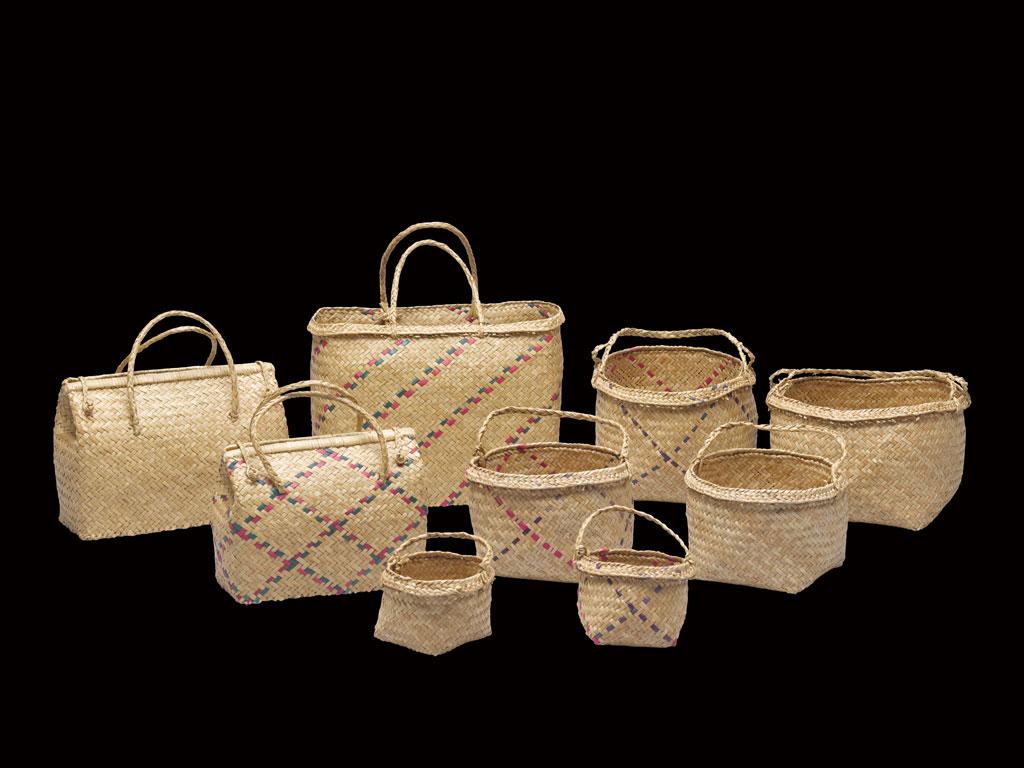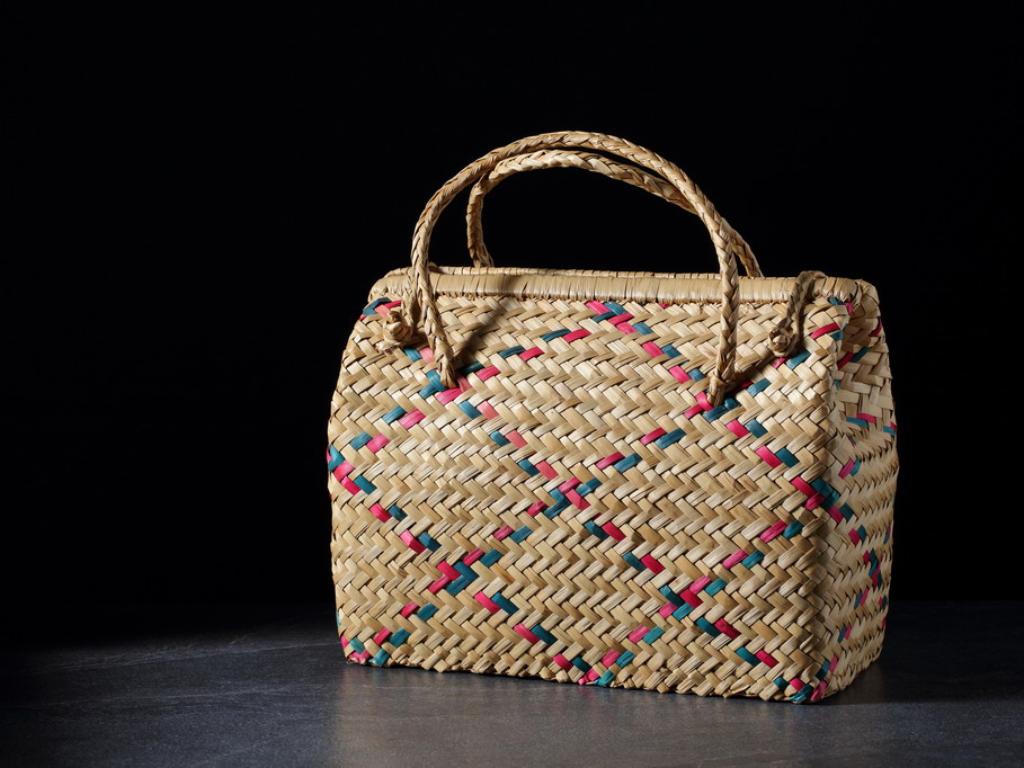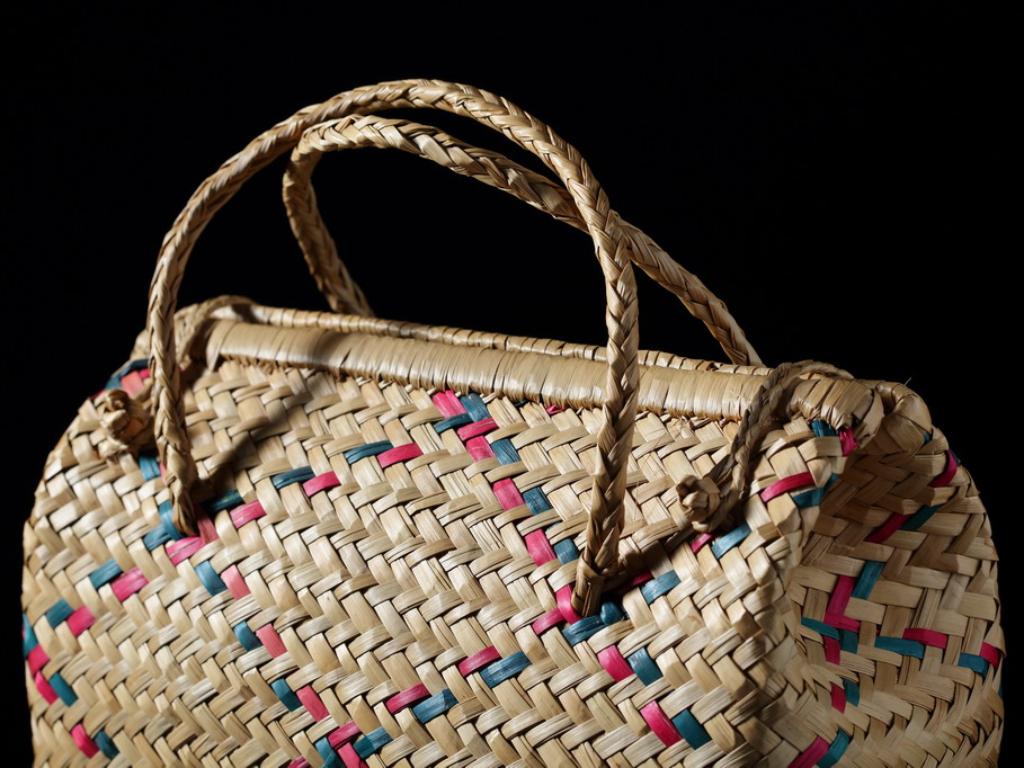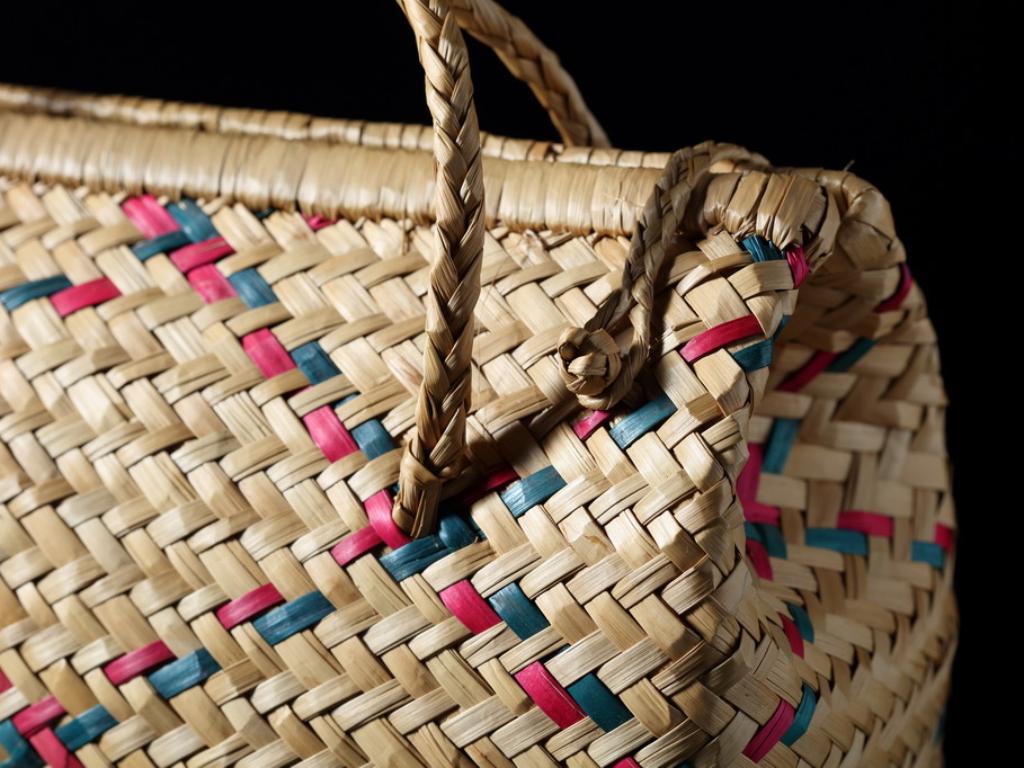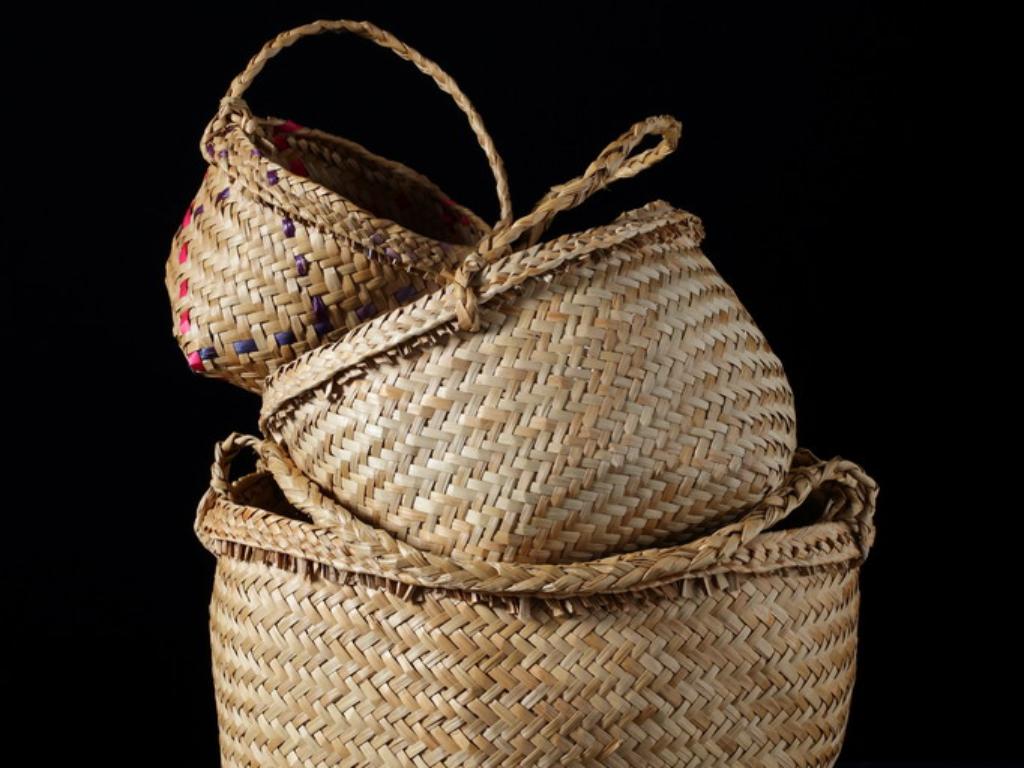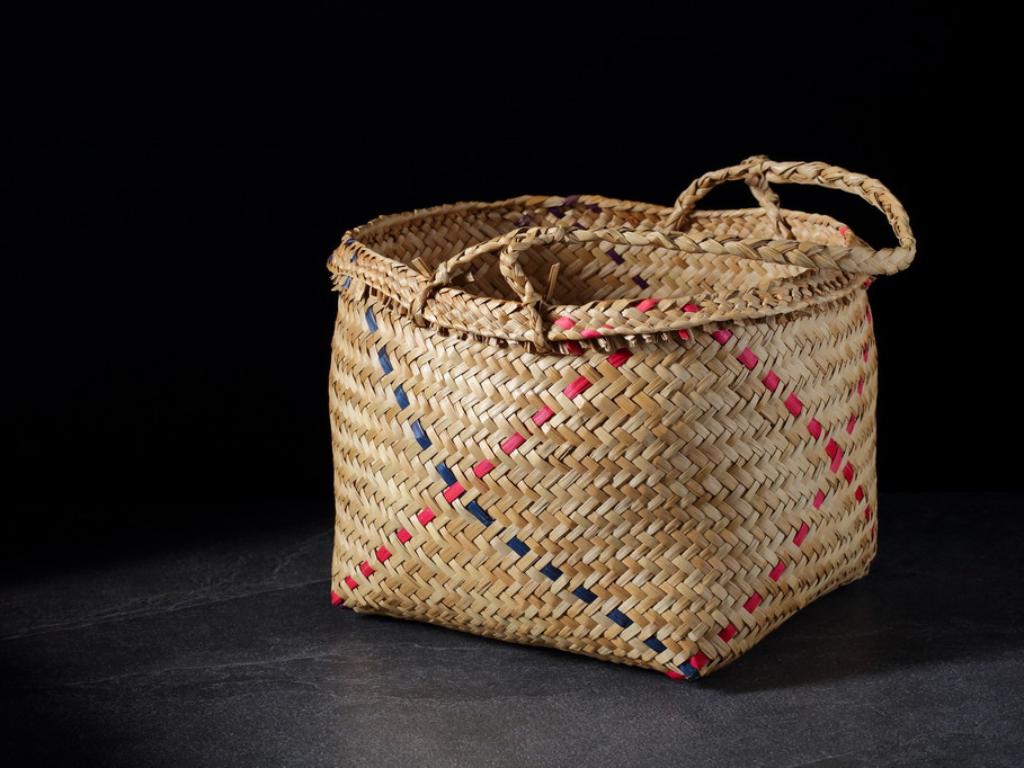
Collection
Rush Baskets
Rush is commonly called galingale or sea grass. Its scientific name is Cyperus tegetiformis Roxburgh and is a plant of Chinese water chestnut, which is the same as bulrush. In the early days, it had most production volume in Tainan and Kaohsiung followed by Changhua, Chiayi, and Ilan. It is usually the material used for straw ropes, straw mats, straw sandals, and rush carrying bags used in daily life.
Mr. Yen Shui-Lung established “South-Asia Arts and Crafts Society” in 1941 to design and supervise residents in Tainan weaving galingale products as well as the selling of products. Besides, he organized “Taiwan Rush Products Manufacturing and Marketing Cooperative” to expand the market to Japan and provinces in Northeast China. The galingale industry was flourishing and with good economic benefits. Unfortunately, the industry started to decline due to the increase of industrial plastic products as well as the competitive sales from Hong Kong and Philippines. The growing area became smaller and smaller and the source of material became rare.
These items of rush carrying baskets with different shapes and sizes are the practical bags used for daily shopping, visiting friends, and indoor storage. Rush is with the nice smell of grass exposed under the sunshine, with simple and solid texture, and excellent toughness. The application on daily appliances can be called the wisdom from old ancestors. This set of collection is with skillful weaving technique, dedicated workmanship, ingenious design, and it is a brilliant example of life application for traditional arts and crafts. The main body uses the weaving patterns of single press and double press with 3D dyeing while the handle is weaved with the technique of 4-strand round and flat braid.
